Simply the Most Powerful ERP Implementation and Rollout Software.
|
Solution
|
|
Features |
|
ERP Implementation Life Cycle |
|
ERP Implementation Life Cycle The ERP implementation methodology includes the following steps, all automatically enacted by the ProcessGene™ BPM software Suite:
| Life cycle step |
ERP implementation life cycle activity |
 |
Business process mapping |
- Define top level organizational functional areas (e.g. HR, Finance, Logistics). Naming conventions differ according to the modeling goal
- Determine lower-level, operational process names
- Delineate process flowcharts (diagrams)
- Define related entities (e.g process owners, roles, departments, IT systems, etc.)
- Allocate workgroups
- Conclude project scope methodology and timeline
|
 |
Process improvement (optional) |
- Define the organization’s strategic goals
- Determine the organization’s customers and stakeholders
- Align the business processes to realize the organization’s goals
|
 |
IT connectivity |
- Relate processes and activities to relevant IT systems
|
 |
Gap analysis and definition of project scope |
- Compare between the enterprise processes and the off-the-shelf enterprise software (“as-is” vs. “to-be”)
- Define and approve required IT system changes (customizations, developments, configurations)
|
 |
Implementation project management |
- Define project main schedule and milestones
- Schedule tasks for software implementers
- Schedule tasks for QA auditors
- Monitor implementation project progress
|
 |
Implementation project acceptance |
- Perform conference-room-pilots for key users
- Manage approvals of key users
|
 |
Implementation project closure |
- Pack an enterprise baseline solution
- Manage training
- Produce documentation packages
|
 |
Process change implementation |
- Define process change implementation plan and scheduling
- Monitor execution of the process change implementation plan
- Verify compatibility between the process design and implementation layers
|
 |
Enterprise software rollout |
- Define local variants
- Implement localizations
- Rollout the enterprise solution to organizational subsidiaries
|
| Change management |
- Define, collect and handle change requirements through dedicated workflows
- Follow-up on requirement fulfillments status
|
| ERP Implementation and Rollout in a Multi-Org environment |
- Determine a global business process baseline with mandatory components
- Establish a workflow for examining local (subsidiary) variants
- Enforce enterprise guidelines, regulations and frameworks within subsidiaries
- Compare and control process models both locally (per subsidiary) and globally from a central HQ cockpit
|
|
|
|
The ProcessGene™ ERP Implementation and Rollout Software UsersThe ProcessGene™ ERP Implementation and Rollout software solution provides value to the following users:
- C-level management (CEO, CFO, CIO, CRO, COO)
- Board of directors
- Business Process analysts
- IT analysts and implementers
- Compliance officers
|









